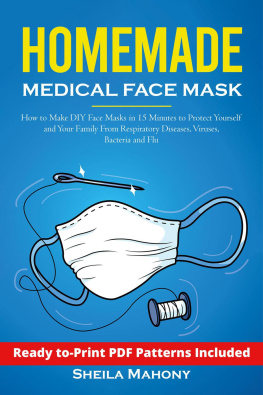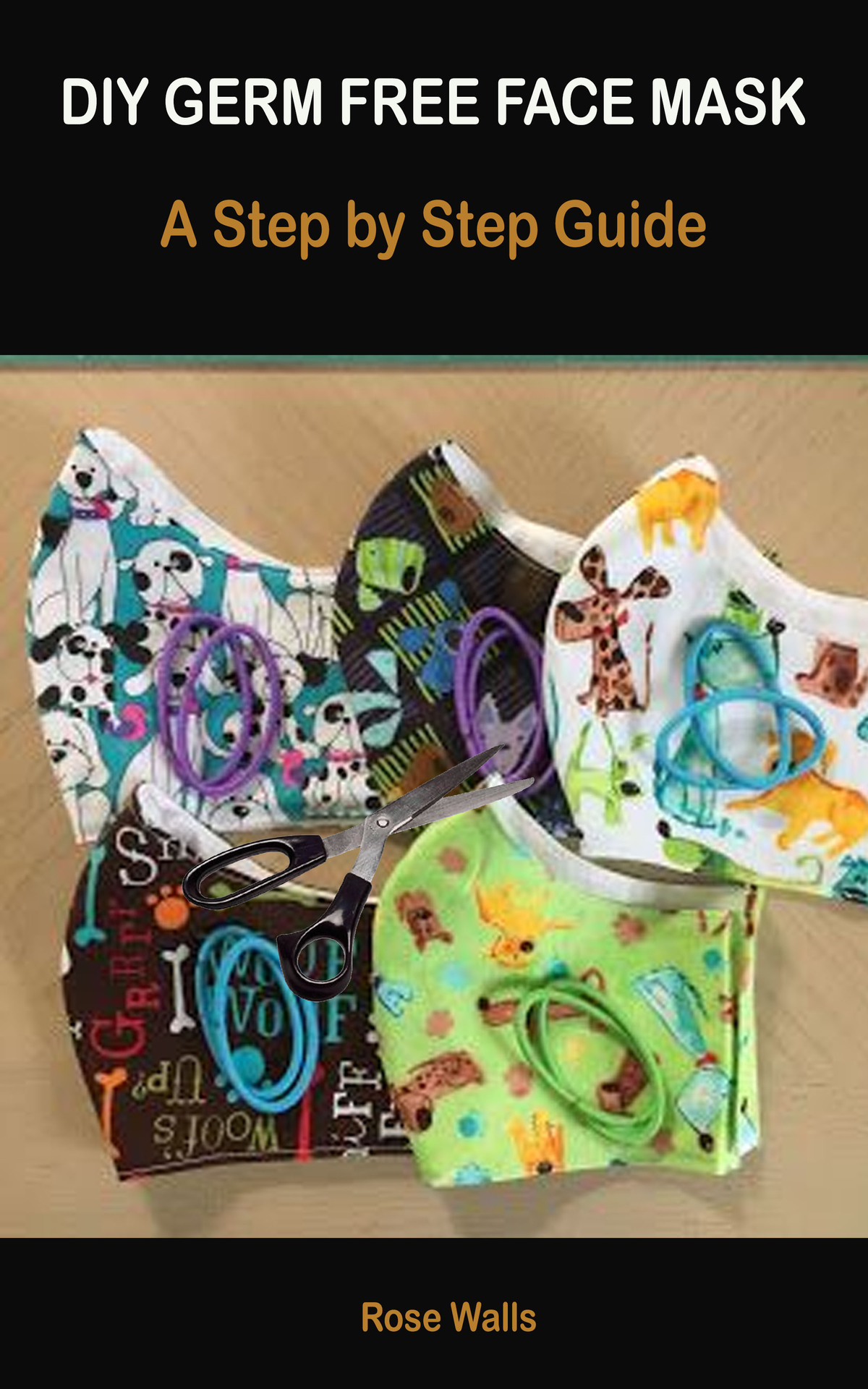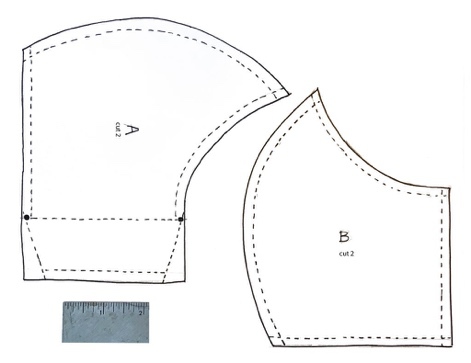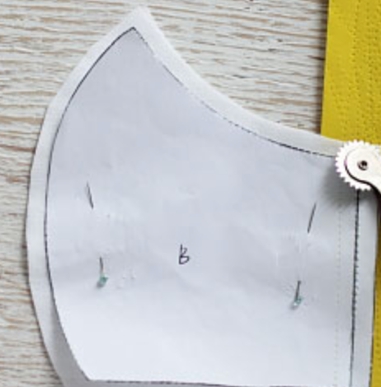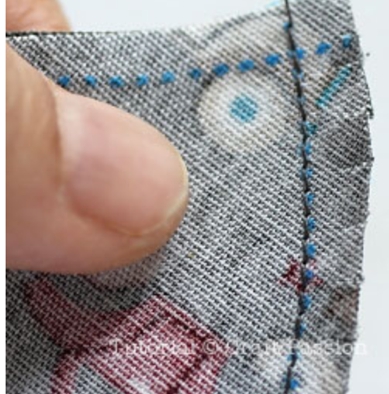DIY GERM FREE FACE MASK
A Step by Step Guide
ROSE WALLS
Table of Content
INTRODUCTION
In times and situations like this, it has become important to learn how to make your facemask. The shortage of facemask is no more news during this pandemic, and many families are learning to make to save stress and money and make their mask in the comfort of their home.
For a beginner who hasnt used a sewing machine before, making a facemask can seem a herculean task but, this DIY guide will simplify every step needed, and walk you through the process of making your facemask.
So, while everyone is encouraged to stay at home, to flatten the curse and contain the spread of this pandemic, a look into this guide will teach you how to sew your facemask, the types of facemask there is, how to wear a facemask properly, etc.
It is essential not just to master how to make facemask at home, but also to know every precaution needed to use one.
When is it appropriate to wear a facemask?
This has remained one of the most asked questions in this time, especially with lots of information going around, one can be confused about how and when to wear a facemask. In addition to knowing the right time to use a facemask, it is very imperative to understand the necessary precautions to be taken before wearing them.
When do you wear a mask?
- If you are taking care of a person with an infectious disease or ailment.
- If you have a cold and flu which can lead to coughing and sneezing
- During a period of air pollution
- If there is a pandemic of airborne infections
What precautions are required before wearing a facemask?
There are necessary precautions one need to adhere to before wearing a medical facemask. These precautions are to make sure you dont put your self at risk while wearing a facemask.
- It is very advisable to wash your hands properly with soap and water or use alcohol-based hand sanitizer to clean your hands before putting on a facemask.
- Do not touch the mask continuously while wearing it. If you must touch it, endeavour to do so with clean hands.
- Do not wear an already used facemask.
- Do not wash single-use facemask and reuse
How to properly dispose of a used facemask.
Like I mentioned above, using facemask involves knowing how to wear, when to wear, and how to dispose of worn facemask properly.
How can you dispose of a used facemask?
- When you notice your facemask becoming moist or wet, it is time for a change and properly disposing of it.
- Wash your hand with running water and soap or sanitize with an alcohol-based hand gel.
- Do not remove the mask from the face, instead hold the ends of the cord, and pull gently to have it loosened and off your face.
- Dispose into a bin or trashcan and wash your hands appropriately.
What are the types of medical Face Mask available?
There is not just one available face mask out there. To know the right facemask to get, you must know the different facemasks available and their uses. So lets explore the different types of face mask that can be seen.
- Gauze Masks.
These are the mask usually used by scientific or medical researchers in a research environment.
- Antiviral Mask.
These are medial face masks made out of special materials. These materials have filter layers with a great sterilizing effect.
- Disposable non-woven face masks.
These types of face masks are antibacterial. They have three layers which function in isolating bacteria and dust. They are safe and reliable and can prevent secondary infection.
Categories of Face Masks.
Just like there are different types of medical face mask, there are also different categories of medical face mask which have been explained below.
- General Medical Face Masks
These are the types of mask you see casually in the hospitals and streets. They are produced according to the medical laid out standards of making a facemask. They protect you from secondary infections and air pollutions.
- Medical Proactive Face Mask.
Have you heard about GB19083-2003 standard? No? These types of mask are made to comply strictly with GB19083-2003 standard, which includes airflow resistance, non-oily particle filtration efficiency, and other forms of technical indicators.
Also, the respiratory resistance should not exceed 35 - 36mmH20 (343-346pa) based on the flow condition. The filtration efficiency should match and be in line with N95 or above.
- Medical-Surgical Face Mask.
While the medical proactive Face mask complies with the GB19083-2003 standard, the medical-surgical face masks comply with the YY-0469-2004 standard. The YY-0469-2004 rule is in line with the requirements for the production of medical surgical face masks. The essential technical features include bacterial filtration efficiency, respiratory resistance, etc.
How to properly wear a Face Mask
Many people are confused about how to wear a face mask properly. Without proper knowledge on how to put on a face mask, you can go out wearing it all wrong. The general pharmaceutical available face mask, which is the medical-surgical face mask has two sides:
- The white side which is the lighter side
- The Darker side which is the blue side
In wearing a face mask, the white side MUST face inwards while the blue surface faces outward.
The face mask straps should be tied at the back of your neck to ensure the mask reaches the root of your chin while the other should be tied at the middle of your head.
Carefully stretch the upper section of the mask to cover your mouth and nose adequately.
With your fingers, press and position the metal wire on the nasal root of the mask to move it closer and tight to your nose.
How to Make a medical face mask.
Materials needed:
- Cotton fabric
- Inner lining fabric
- Brown or white cardboard paper.
- Elastic fabric or band.
- Scissors, tape, chalk or pencil, pins, etc.
- Sewing machine/thread and needle.
Step one:
- On cardboard, brown paper or white paper, draw out a preferred pattern measurement and cut out.
- Place the cut-out pattern from the cardboard or white paper and cut out two pieces of cotton fabric. It must be a cotton fabric because its preferable. The measurement to be cut out depends on the size of your face but none the less, to calculate how much of fabric you need, use the size of a folio as reference
Step Two.
- Find a suitable inner lining and cut out appropriately.
Step Three.
- Place the lining material above the first cotton material, and place the second cotton material above the lining. Carefully pin them together to stay intact.
Step Four.
- Carefully fold the upper half of the fabric together to three folds of 4-5cm each, pass an elastic fabric or band in the folded space and sew





